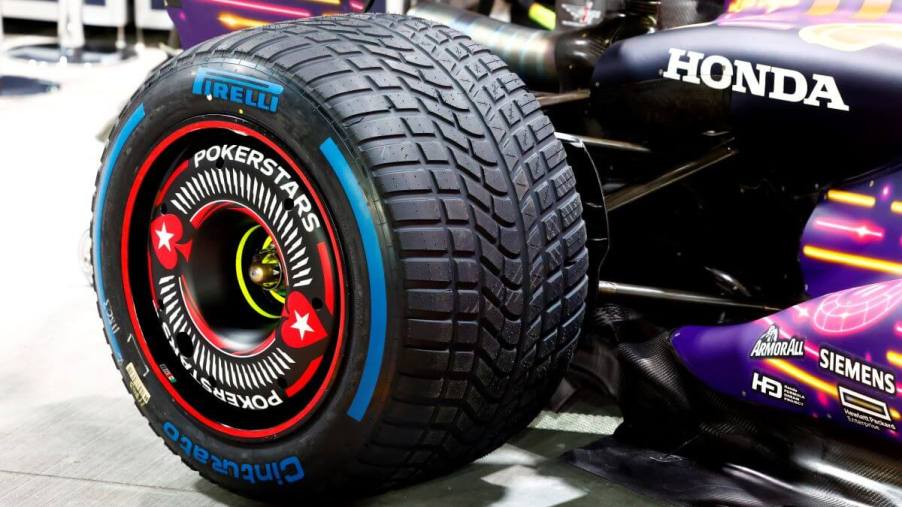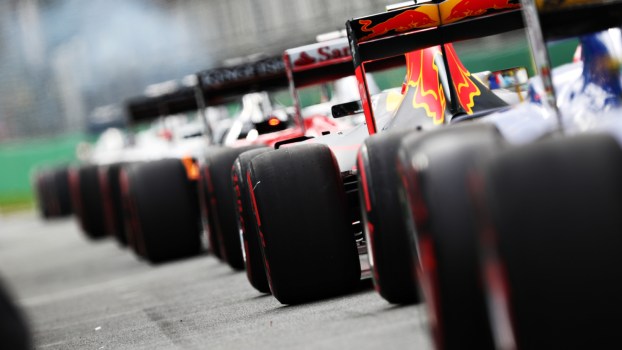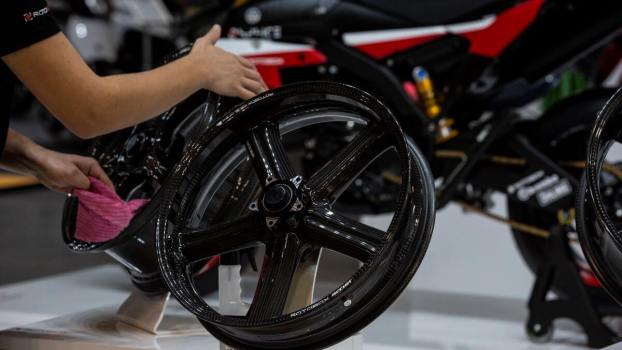
Does F1 Tire Technology Transfer to Road Tires?
Formula 1 serves as the pinnacle testing ground for tire compounds and technology. Pirelli is all too happy to tout its role as the sole tire supplier for the racing series — a deal it recently extended through the 2027 season. So, does the tire manufacturer’s presence in F1 matter when it comes to consumer cars? Yes, the company says, and it’s all down to data.
F1 cars are ‘rolling laboratories’
MotorBiscuit sat down with Mario Isola, Pirelli motorsports director, and Pirelli’s North American CEO Claudio Zanardo at the 2023 Austin GP to discuss if F1 tire technology can influence road tires. The consensus was yes, but not in a direct way. It’s all about the data that can be gleaned from the sport.
Isola likened Formula 1 cars to “rolling laboratories,” rife with sensors that give the company 115 telemetry channels from which to glean information.
“Obviously, we are focused on parameters that are related to how the tires operate on the track,” said Isola. “We don’t have parameters on engine power, engine cooling, or this kind of stuff because we are not interested in these elements. But speed loading, forces acting on the tires, the ride height on the car, we measure the level of creep, corner stiffness — a lot of useful information for us [is] coming from these guys.”
Data is always the proverbial name of the game. The information gathered from tire use in Formula 1, which Isola called “the most stressful environment” for tires, is used to “develop the know-how and technology that we can transfer to the road tires.”
Most notably, the data sets can be used to develop new compounds or in simulators to modify parameters surrounding specific tire uses and conditions. This also allows Pirelli to reduce the development time for a new tire by about 30% and reduce the number of physical prototypes required for testing.
These factors are relevant for consumers when a car manufacturer approaches Pirelli in the development phase of a new model.
Developing new tires for new consumer cars
Developing a consumer tire starts years before the public has even had its first glance at an automaker’s new model, Zanardo says. And as of late, much of the focus on new tire development across the industry has surrounded electric vehicles.
EVs bring a new set of challenges for tire development. The cars are heavier. They develop far more torque than their internal combustion counterparts. They must deliver maximum driving range. And with no firing pistons to drown out tire noise, they must be quiet in their operation.
“When Formula 1 decided to move from [internal combustion] to a hybrid power unit, we were able to develop our tire for additional weight and the additional torque,” Isola said. “That was a good exercise for EVs because you have a lot of weight; you need to have the right level of performance. The experience in Formula 1 is quite useful to develop a product for EVs that is at the right level.”
While noise isn’t a consideration for F1 tires, Zanardo again credits the data Pirelli can use from Formula 1 in developing consumer tires, even those for use on all-electric models. This includes the development of new materials, their execution on specific models, and the use of automation to simulate performance.
“All of these things come from Formula 1,” Zanardo said.
The Italian company has longstanding partnerships with OEMs like Ferrari, BMW, Lamborghini, Maserati, Mercedes-Benz, and others. However, as of late, particularly in the EV segment, Pirelli is now collaborating with more U.S. manufacturers like Tesla, Rivian, and Ford.
There are unique aspects to tire development in the U.S. versus other parts of the world. American drivers typically turn to all-season tires and generally use them to traverse more miles than drivers in other countries.
Again, Zanardo credits the myriad of data points the company can use — including from F1 — to separate itself from other tire makers to land deals with automakers. Typically, an OEM will seek tire development for a new model from two tire manufacturers, he said.
“We like competition,” Zanardo said.
Pirelli doesn’t discount the marketing aspects of F1, either
Pirelli’s role as the sole tire supplier to F1 is hard to miss for even casual fans. The brand’s yellow and red logo is splashed across Formula 1 tracks, and Pirelli hats adorn the podium-finishing drivers.
However, the marketing factors aren’t always necessarily positive. Aside from some criticisms from drivers regarding compounds over the years, Isola said when the company re-joined the sport in 2011, a customer said he didn’t want Pirelli’s because the company developed a high-degradation tire for use in F1.
But, for the most part, it’s positive marketing.
Formula 1 serves to showcase the brand, Zanardo said. Showing Pirelli tires in “the most demanding atmosphere” develops a “trust” among consumers.
While this could be debatable among those heading down to their local tire shop, Pirelli is banking that its presence in the sport will paint them in a positive light for at least the next three seasons of F1 competition.






